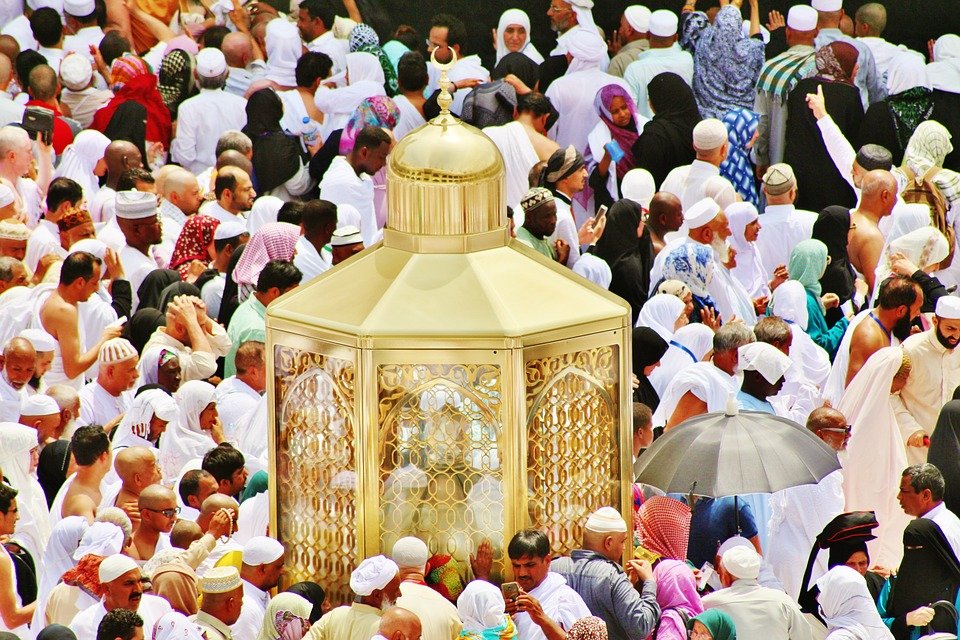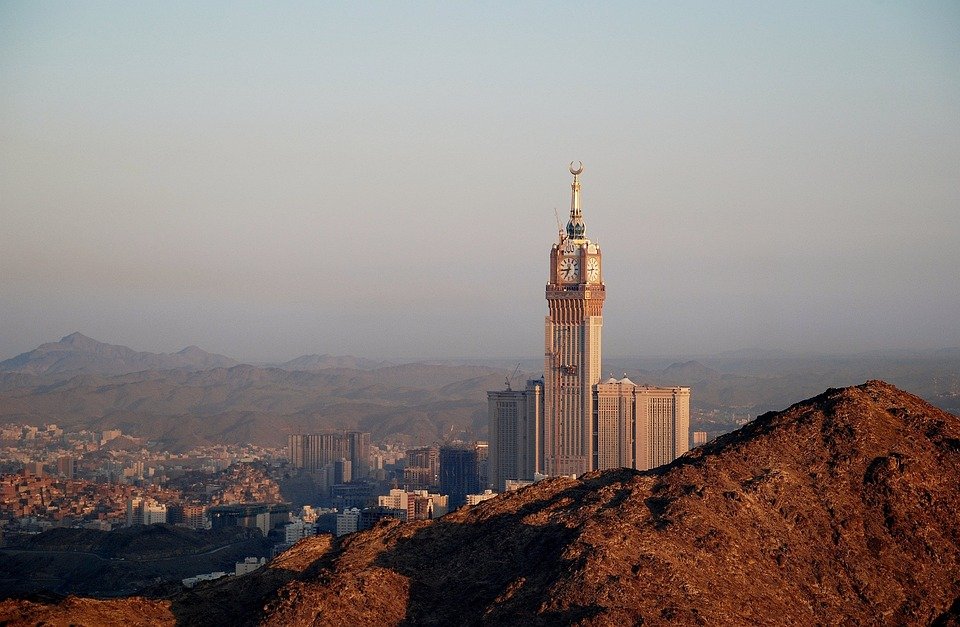You are here to read: What Time of Year is Hajj: Essential Guide and Insights – A Thoughtfully Written Guide Offering Spiritual Wisdom and Travel Advice for Every Pilgrim who is going on holy journey of Hajj or Umrah.
When considering “what time of year is Hajj,” it’s crucial to understand that this significant pilgrimage takes place during the Islamic month of Dhu al-Hijjah. This month falls in the lunar calendar, leading to variations each year in the Gregorian calendar. In my opinion, knowing the timing is essential for any Muslim contemplating attending this holy pilgrimage. In this article, I promise to provide you with a comprehensive guide to ensure you grasp everything related to “what time of year is Hajj”—from its exact dates to the customs associated with this blessed occasion.
I feel the importance of “what time of year is Hajj” cannot be overstated. The pilgrimage represents a spiritual journey that holds immense significance for millions of Muslims around the globe. Our site, Airlinkhajjandumrah.com, has nine years of experience in the Umrah and Makkah, Madinah travel field since 2016, and we aim to share our expertise with you. Through this article, we hope to shed light on the essential details surrounding Hajj and why timing is crucial for those wishing to partake in this remarkable experience.
What is Hajj?
Hajj is one of the most important events for Muslims around the world. It is a pilgrimage that takes place in Makkah, Saudi Arabia. Every year, millions of Muslims gather to perform this spiritual journey. Hajj takes place during the Islamic month of Dhu al-Hijjah, which is the last month of the Islamic calendar. This month changes each year because the Islamic calendar is lunar. That means it’s shorter than the Gregorian calendar we usually use, which can make it exciting and also a little tricky when planning.
During Hajj, pilgrims perform several rituals over five days. They seek to purify themselves and connect deeply to their faith. This spiritual experience can feel overwhelming and uplifting at the same time. Imagine walking in the footsteps of the Prophet Muhammad and visiting sacred sites in Makkah. It’s not only a time for personal reflection but also a time to build camaraderie with other Muslims from all walks of life. It’s truly a unique and profound occasion that shapes the lives of millions.
When Does Hajj Occur?
Hajj occurs annually, but the specific dates change each year. This is due to the lunar Islamic calendar. In 2023, for instance, Hajj starts on the evening of June 26 and continues until July 1. These dates can shift by ten to eleven days earlier each year in the Gregorian calendar, which means it’s important to keep track. If you plan to participate, checking with reliable sources is vital, as timing can be crucial for various arrangements.
Understanding the timing of Hajj is essential not just for pilgrims but also for anyone interested in this significant event. Knowing when it occurs helps in scheduling travel plans for those wishing to experience Makkah and Madinah. Whether you’re looking to visit or learn more about the rituals, being aware of the right dates gives you the opportunity to plan ahead. It’s a chance for many to witness the profound faith that thousands of Muslims express during this period.
The Spiritual Significance of Hajj
Hajj carries immense spiritual importance in Islam. For many, attending Hajj is a lifelong dream and a religious obligation. Muslims believe that those who complete the pilgrimage experience spiritual renewal. They come back home feeling lighter and more at peace. The rituals performed during Hajj symbolize various aspects of faith, including submission and obedience to God’s will.
You're at the middle of this awesome post at AirlinkHajjandUmrah.com through: What Time of Year is Hajj: Essential Guide and Insights. Keep reading, it gets better!
Participating in Hajj often leads to a fresh perspective on life. It encourages people to focus on what truly matters and lets them reset their priorities. Many pilgrims recount how the experience brought them closer to their faith and helped them develop a deeper understanding of what it means to be part of the global Muslim community. This sense of unity is enriching, as each pilgrimage offers countless stories of resilience and hope.
The Rituals of Hajj Explained
The Hajj experience includes several important rituals that pilgrims must perform. One of the first rituals is entering a state of Ihram. This means wearing special white garments that symbolize purity and equality. Once in Ihram, pilgrims are not allowed to cut their hair or nails, further emphasizing a focus on spirituality. It’s an important reminder that everyone stands equal before God.
Beyond Ihram, pilgrims travel to a sacred site called Mina and then to Arafat for prayer and reflection. This is often one of the most moving parts of the pilgrimage. In Arafat, individuals spend time praying and asking for forgiveness. The experience of standing together with so many others is truly humbling. Afterwards, pilgrims celebrate Eid al-Adha, which marks the end of Hajj with feasts and communal prayers. Engaging in these rituals is a powerful affirmation of faith and connection to the divine.
How the Dates of Hajj Impact Travel Plans
The fluctuating dates of Hajj significantly influence travel plans for pilgrims and their families. If you’re considering traveling to Makkah for Hajj, booking in advance is crucial. Hotels and flights can fill quickly as the dates draw near, often leading to inflated prices or limited availability. I believe it’s smarter to start planning your trip earlier than later. This way, you can secure solid accommodations and find affordable travel options.
It’s also important to be aware of inclement weather during the Hajj season. The summer months mean very high temperatures in Saudi Arabia, which can make the experience more challenging. Ensuring you stay hydrated and protect yourself from the sun’s heat is not just smart; it’s essential. This preparation can profoundly affect how you experience your pilgrimage.
Preparing for Hajj: What to Remember
Preparation for Hajj involves both spiritual and practical steps. First, you might want to educate yourself about the rituals and history of Hajj. This knowledge can enhance your experience, making it more meaningful. Many pilgrims recommend finding a guide or joining a group. This can provide valuable insights and shared companionship during the pilgrimage.
Next, consider your physical health. You might need to undergo a medical checkup to ensure you’re fit for the trip, especially given all the walking and standing involved. Packing appropriately is another key element. Bring comfortable shoes, lightweight clothes, and essential items like sunscreen and medications. Preparing mindfully can ease stress and allow you to focus on spirituality during this important time.
What to Expect After Hajj
Returning home after Hajj can evoke a mix of emotions. You might feel elated and spiritually renewed but also a little lost, as returning to daily life can be quite a change. Many people report that they hold onto the feelings of joy and connection they experienced during Hajj. They often cherish memories of shared prayers and friendships forged during the pilgrimage.
Some participants consider post-Hajj reflections as important as the pilgrimage itself. It’s a time for gratitude and setting new goals for personal growth. Some aim to foster closer ties within their local communities, while others may want to practice acts of kindness and charity. This shift can be rewarding and fulfilling, making the spiritual journey of Hajj resonate long after the physical journey is over.
That wraps up What Time of Year is Hajj: Essential Guide and Insights. Thanks for sticking with us till here! Share this: What Time of Year is Hajj: Essential Guide and Insights with your friends.
Check our homepage at Air Link Hajj & Umrah for more awesome updates.
Some interesting posts are: 1: Umrah Mubarak, 2: When is Umrah closed 2026?, 3: When does Umrah start after Hajj 2026?
Mushu, an experienced Saudi Arabia traveler and writer, shares insightful tips and spiritual reflections to enhance Hajj and Umrah journeys for fellow pilgrims. He has been to Makkah and Madina from 2016 to 2023 many times and his posts will reflect this.






